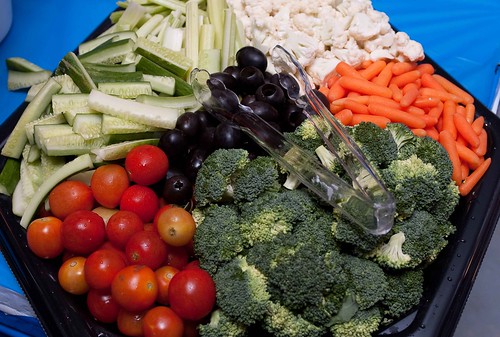Ensalåda: Salad
Description
A mixture of various fresh vegetables, dressed with a sauce flavored with herbs or seasonings.
History
Origin
Salad is one of the most versatile dishes, utilizing a wide array of ingredients and dressings. Its origins can be traced to a dish popular in 15th century Milan, evolving from a soup-like dish to the more recognizable mix of leafy greens and vegetables in 18th century France. The Spanish introduced the notion of ensalåda to the CHamorus during the Spanish era beginning in the 17th century and lasting through the close of the 19th century.
Evolution
For the CHamoru fiesta table, only a few kinds of salad are commonly served, including cucumber (pipino) salad, often dressed with a simple vinaigrette of soy sauce, vinegar, oil and black pepper, and a type of coleslaw or combination of shredded cabbage, cucumbers and carrots with the same vinaigrette. The soy sauce is representative of Asian influences on CHamoru cuisine from Japanese immigrants.
Creamy dressed salads such as American-style coleslaw, mixed green salads, fruit salads, and even salads of different kinds of vegetables and beans, are also available at some fiestas. CHamoru-style potato salad is a popular standard on most fiesta tables. A twist on the American potato salad, the CHamoru version typically consists of cooked diced potatoes, combined with mayonnaise, relish, olives, celery, onion and diced boiled eggs. Macaroni or pasta salad is also a popular item, containing cooked macaroni pasta, mayonnaise, and other fresh vegetables.
Preparation
Clearly, the types of salads presented at traditional fiestas depend largely on the availability of vegetables and other seasonings or ingredients for dressings. The fairly rich soil in the Marianas allows for a variety of garden vegetables to be grown. Most of these vegetables were introduced during the many years of Spanish colonization. These include beans, onions, peppers, eggplants, tomatoes, melons, squash and cucumbers. Traditionally, cucumbers were prepared by boiling, frying, baking or in stews, but were also used in salads when ripe.
American-style salads, including coleslaw, lettuce salads, fruit salads, potato salad and heart of palm salads, were introduced by American families during the early US Naval administration and utilized both imported and locally available ingredients.
Today many vegetables for salads and salad dressings are available at the local market, rather than grown in family gardens. Nevertheless, a salad at the fiesta provides a nice balance among the abundant meat and starchy foods present at the table.
Placement on table
Salads are often placed together on the fiesta table in large serving bowls or containers at the end after the starches (åggon), meat and seafood (totche), and kelaguen dishes.






